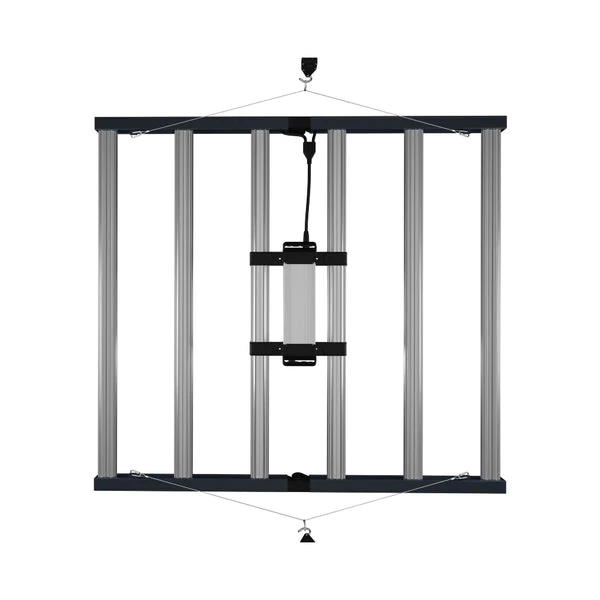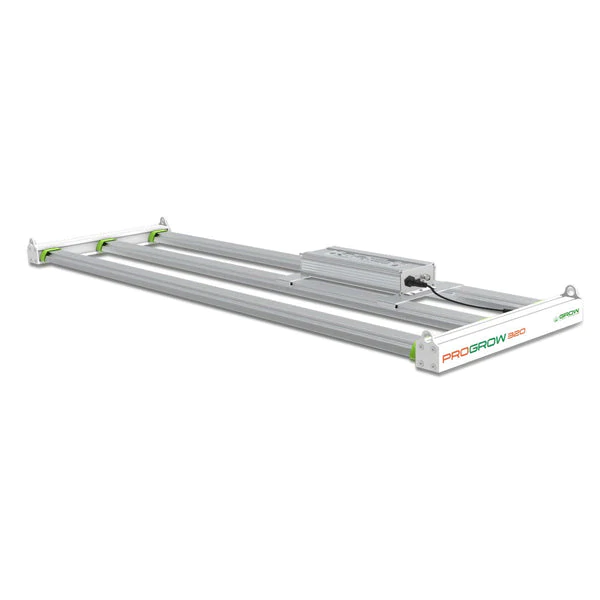- Home
- SHOP ECO FARM
-
TOP BRANDS
-
Grow Lights Brands
- Adjust-A-Wing
- Apollo Horticulture
- Bestva
- Black Dog LED
- California Lightworks
- ChilLED Grow Light
- Eco Farm
- HLG - Horticulture Lighting Group
- Kingled
- Kind LED
- Mars Hydro
- Morsen
- Neilo
- NextLight
- Phlizon
- PlatinumLed
- Roleadro
- Optic LED Grow Lights
- ViparSpectra
- Vivosun
- EYE Hortilux
- IPOWER
- NanoLux
- Phantom grow light
- Gavita grow lights
- Grower's Choice
- Lumatek
- Maxibright
- Yearld Pro
- ThinkGrow
- Crecer Lighting
- Green Sunshine Electric Sky
- fohse aries
- loriflux
- luxx
- fluence
- iluminar
- Lex
- LTC
- Rayonled
- FGI
- PHOTONTEK
- Grow Tents & Kits Brands
- Extraction & Harvest Brands
- Climate Control & Hydroponic Brands
-
Grow Lights Brands
- COMPANY INFO
- COOPERATE WITH US
- Blog
- Sign in
- Home
-
SHOP ECO FARM
- ECO Farm Grow Lights
- ECO Farm LED Grow Lights
- ECO Farm Quantum Board
- ECO Farm Samsung LED Grow Lights
- ECO Farm COB Grow Lights
- ECO Farm Commercial Lights
- ECO Farm Supplemental Grow Light
- ECO Farm Fluorescent grow lights
- ECO Farm HPS & MH Grow Lights
- ECO Farm CMH Grow Lights
- ECO Farm HID/CMH Bulbs & Ballasts
- ECO Farm Grow Tents & Kits
- ECO Farm 2x2ft Grow Kits
- ECO Farm 3x3ft Grow Kits
- ECO Farm 3.3x3.3ft Grow Kits
- ECO Farm 4x4ft Grow Kits
- ECO Farm 5x5ft Grow Kits
- ECO Farm Grow Tent - Standard Style
- ECO Farm Grow Tent - Extension & Roof & Lodge Style
- ECO Farm Extraction & Harvest
- ECO Farm Rosin Press Machine
- ECO Farm Dry & Wet Trimmers
- ECO Farm Oil Accessories
- ECO Farm Medicinal Plants Grinder
- ECO Farm Medicinal Plants Containers
- ECO Farm Medicinal Plants Dryer
- ECO Farm Refrigeration Dryer
- ECO Farm Climate Control & Other Accessories
- ECO Farm Inline Duct Fans
- ECO Farm Oscillating Fans
- ECO Farm Exhaust Fans
- ECO Farm Air Filter
- ECO Farm Duct Muffler
- ECO Farm Ventilation Kits
- ECO Farm Plant Humidifiers
- ECO Farm Plant Dehumidifiers
- ECO Farm Hydroponic Accessories
- ECO Farm Other Accessories
- ECO Farm Hydroponics Microscopes
-
TOP BRANDS
- Grow Lights Brands
- Adjust-A-Wing
- Apollo Horticulture
- Bestva
- Black Dog LED
- California Lightworks
- ChilLED Grow Light
- Eco Farm
- HLG - Horticulture Lighting Group
- Kingled
- Kind LED
- Mars Hydro
- Morsen
- Neilo
- NextLight
- Phlizon
- PlatinumLed
- Roleadro
- Optic LED Grow Lights
- ViparSpectra
- Vivosun
- EYE Hortilux
- IPOWER
- NanoLux
- Phantom grow light
- Gavita grow lights
- Grower's Choice
- Lumatek
- Maxibright
- Yearld Pro
- ThinkGrow
- Crecer Lighting
- Green Sunshine Electric Sky
- fohse aries
- loriflux
- luxx
- fluence
- iluminar
- Lex
- LTC
- Rayonled
- FGI
- PHOTONTEK
- Grow Tents & Kits Brands
- Apollo Horticulture
- Black Box
- CoolGrows
- Eco Farm
- GrowLab
- Gorilla Grow Tents
- Mars Hydro
- Quictent
- Secret Jardin
- Unit Farm
- TopoGrow
- VIVOSUN
- Topolite
-
COMPANY INFO
-
COOPERATE WITH US
- Blog
Spectrum King Phoenix 340W LED Grow light VS Grow Light Science PROGROW 320 LED Grow Light
May 24, 2022
With less light coming through your windows during these shorter winter days, you may be wondering if your plants are getting what they need to thrive. While the season’s weaker light may be enough for some houseplants, others need a boost to keep them growing. Still others, such as garden seedlings and flowering plants, may require more intense light than your home provides.
If you’re thinking about introducing artificial light into your home, here’s what you need to know.
Why Should I Use Indoor Grow Lights?
The uninitiated may believe that grow lights are sufficient for plants. However, even if you use LED lighting, it is almost certainly too weak to help a crop in a grow room. Remember, your home’s lights are designed for your eyes rather than plants. The light spectrum required to help us see is very different from what plants require for photosynthesis.
There are plants like microgreens that can flourish with a basic lamp. However, plants require fairly strong and consistent light to help them into the blooming phase. Remember, when you grow plants indoors, you’re competing with the sun in terms of light! This means you need high-power lights in your plants’ grow space.
These days, growers are spoiled for choice with grow lights. There is an incredible array of options, providing better safety, cost-effectiveness, and efficiency than ever before. Simply put, if you want a decent yield, you must invest in specific grow lights.
Spectrum King Phoenix 340W LED Grow light

Features:
Spectrum King grow light is the most efficient LED light fixture on the market with a dedicated plant spectrum. SK Cryo-Therm cooling technology enables ultra-thin profiles, maximizes airflow and minimizes microclimates. It has unmatched performance and reliability in its class. It is optimized for single or multi-level planting near the canopy. The Spectrum King Phoenix 340W Veg sets a new benchmark for what’s possible with grow lights. The full spectrum is ideal for most light-loving plant seedlings, vegetation and the entire growth stage of flowering. IP65 waterproof horticultural lighting system, can be used in humid or water vapor environment, easy to use, plug and play.
Grow Light Science PROGROW 320 LED Grow Light

Features:
Grow Light Science Grow 300 320W LED Grow Light is a full spectrum, high performance lighting solution for commercial or home indoor garden or planting operations. The form factor of the Grow 300 allows for expandability and multiple grow room and tent configurations. The incredible light output (PPF), spectral distribution and efficacy of this grow light will give your plants amazing results at an affordable price. PPFD levels of up to 1,500 umols/m2/s will proportionally increase yield as long as other key factors such as CO2, water and nutrients remain in balance. The GROW 300 easily delivers PPFD levels in excess of 1,000 umols/m2/s, either individually or in multi-cell arrays.
What to Look for in a Grow Light
Size
When deciding what size grow light you need, think about how many plants you’ll need to cover. Also, if you’re planning to move your light from place to place, you might want something lighter and portable, whereas if you know it’s going to stay put, that might not be as much of a factor. Also, consider the space where you plan to put it, and make sure there’s room for it to operate safely and not up against furniture, drapes, or other items.
Type
There are various types of grow lights to consider, from panels to ones that hang overhead or screw into a regular light fixture. The type of plants you have, the amount of existing natural light, and where your plants are located will help you narrow down your choices. Hanging lights are typically larger, while desktop lights are smaller and easy to move around. If you want a complete system, consider a full garden kit that includes the planter with a built-in light.
Wattage
Wattage isn’t as important as you might expect when it comes to grow lights, but it’s still a factor worth considering. The more important metric is actually PPFD, or photosynthetic photon flux density, which measures the specific light emission a lamp gives off.2 Because this is a bit complicated to figure out, wattage is a useful tool to determine the correct fixture for your plants. The rule of thumb is that you need 32 watts per square foot, so most indoor plants (especially herbs) will do just fine with a lower-watt light.
FAQ
How far should grow lights be from plants?
Though it depends on the wattage and light wavelengths, grow lights should be placed at least 2 feet away from your indoor plants to avoid overheating. That said, LEDs and fluorescent lights typically have lower heat outputs, so they can be placed a little closer.
How long should grow lights be on for?
To effectively mimic the sun’s natural light, a grow light should be on for eight to 16 hours a day, depending on where you live, what time of year it is, and the type of plant. If your plants receive some natural light, they generally won’t need as much artificial light, whereas a plant that doesn’t get any natural light may need the full 16 hours.
Do you have to use LED lights?
LEDs are most often recommended for grow lights, though some fluorescent and incandescent bulbs can work. The most important thing is that the bulbs offer full-spectrum illumination and produce waves of red and blue light, which is often necessary for plants to thrive indoors.
Conclusion
When growing plants indoors, you have to decide what takes top priority. Do you care about your energy bills, the environment, secrecy, or efficiency?
If you’re looking for discretion, LED grow lights and fluorescent grow lights are the likeliest options. However, if you’re after efficiency, HID is probably the best grow light for plants available. That is, as long as you don’t mind the increase in your electricity bill.
Then again, if you have a grow space of less than five square feet, fluorescent light is enough when your plants are small. You can upgrade to a 250W HPS as the plants get larger. If you have space, an MH light for plants in the vegetative stage and HPS for the blooming phase works well. Using MH lighting throughout is fine but will have fewer flowers, more foliage, and a lower yield.
Different options work best for different solutions, so pick the one that’s right for you and work to its advantages. Once you have selected the right light for your needs, you can start growing plants. After choosing the soil type, your fertilizer preferences, and a few other things, of course!
Also in Indoor Grow LED Grow Light
HLG Greenhouse Pro HE HV 630W LED Grow Light VS Geeklight grow light 480W hydroponic led grow light
October 20, 2023
